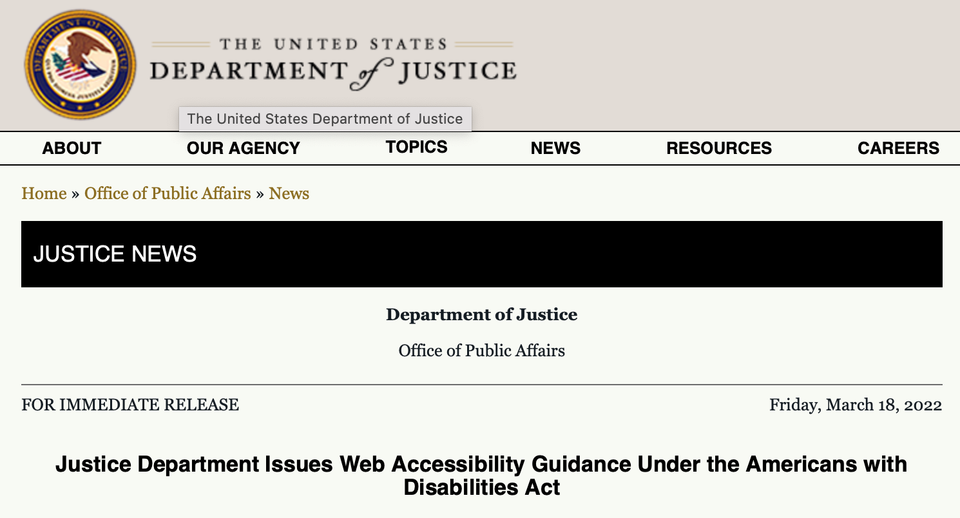
Justice Department Issues Web Accessibility Guidance Under the Americans with Disabilities Act
On March 18, 2022, the DOJ announced the inclusion of web accessibility guidelines under the Americans with Disabilities Act (ADA).
These new guidelines explain how to state and local governments as well as businesses open to the public can make sure their websites are accessible to people with disabilities.
These new guidelines explain how to state and local governments as well as businesses open to the public can make sure their websites are accessible to people with disabilities.
